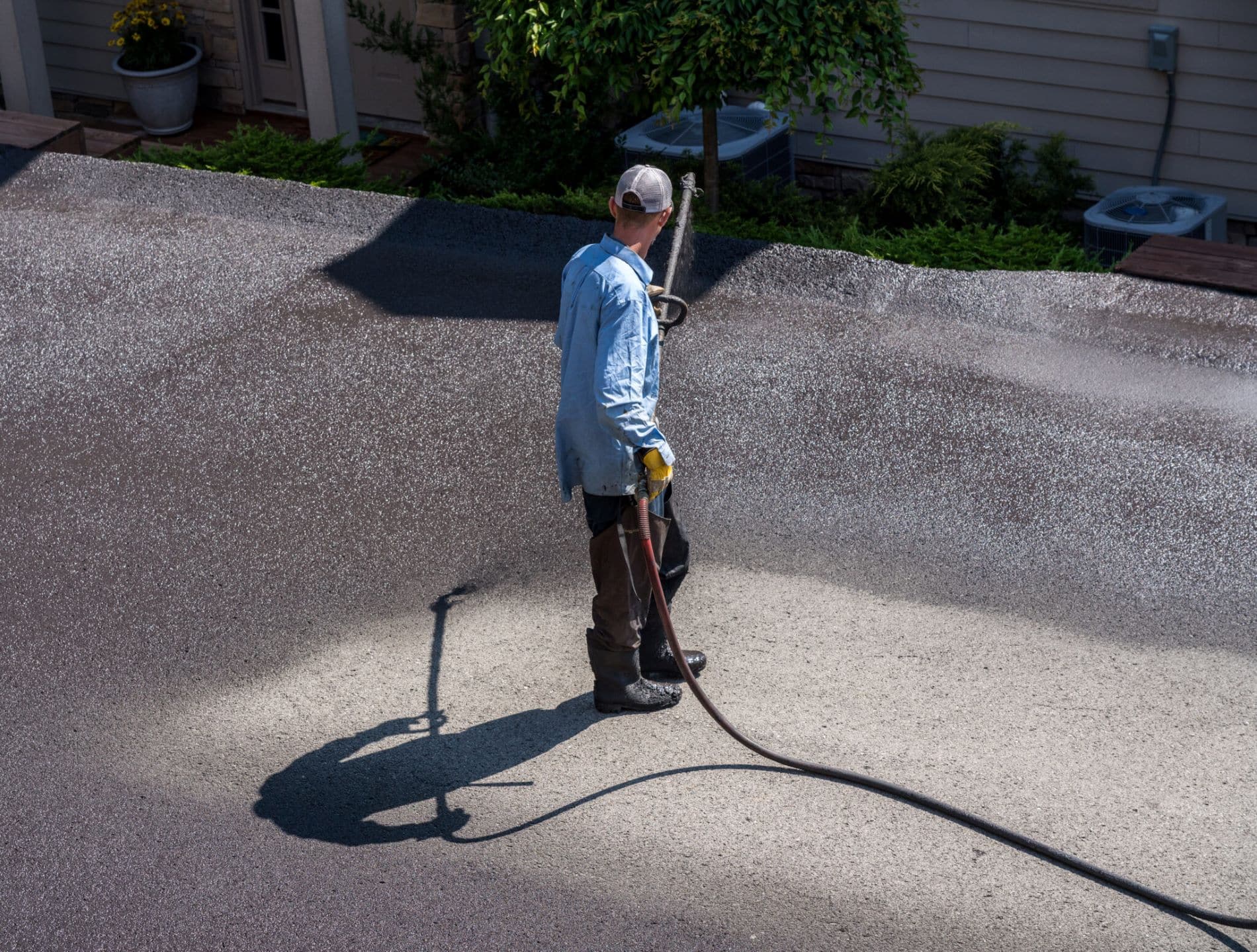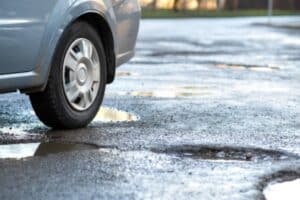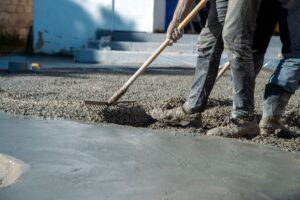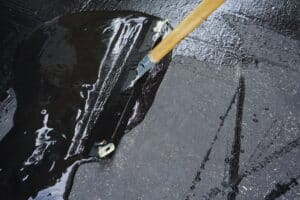When sealcoating an asphalt driveway, asphalt parking lot, or any other paved surface, there are some key factors to consider – like sealcoating temperature and weather conditions. If an asphalt sealer is applied at the wrong temperature or in unfavorable weather conditions, it will not adhere properly to the surface and will likely fail. In this article, we’ll discuss what sealcoating temperature and weather conditions you should look for before sealcoating your property.
Asphalt Sealcoating: Ideal Conditions
The best sealcoating temperature is when the asphalt is warm and dry. In general, sealcoat should be applied when the ambient air temperature is between 50-85 degrees Fahrenheit. If it’s too hot or too cold, the sealant will not adhere properly to the surface and could result in a poor finish. However, here at Superior Asphalt, LC, our coating has added water, allowing us to sealcoat above 85 degrees. The extra water gives us more time to apply the sealant before curing while still ensuring a thick layer of protection.
Additionally, the sealer should not be applied to pavement in wet or rainy conditions. This is because the sealer will not cure properly and could end up washing away.
The best weather to sealcoat is when the temperature is mild, and it hasn’t rained recently. Sealcoating in direct sunlight can also cause problems, so try to sealcoat in the early morning or evening hours instead.
Moisture & Rain
As mentioned earlier, sealant should not be applied in wet or rainy conditions. If sealcoating is done during a rainstorm, the sealant will wash away. You’ll have to re-apply it – which can be costly and time-consuming. Additionally, if there is moisture on the surface prior to sealcoating, the sealant will not adhere properly and could end up peeling or flaking off.
Humidity has a significant impact on how fast the sealcoat material dries. Water in the sealant must evaporate into the air, but when moisture saturates the air, drying time slows considerably. In addition, high humidity levels slow the drying process. The humidity levels are quite significant, and a few percentage points might double the drying time. The ideal humidity level is below 60%.
Read More: Sealcoating Asphalt and Rain
Wind
High winds can also cause problems when sealcoating. If the pavement sealer is applied in high winds, it could blow away before it has a chance to cure properly. This will result in a poor finish and could require reapplication of the sealant.
Sunlight
The sealcoat must be exposed to direct sunlight for it to dry properly. If the coated surface is kept mostly cloudy, drying time will be extended.
For the best results, the sealcoat material must be in direct sunshine for the bulk of the drying period. Even cloudy weather during the day may have an impact on the coating’s quality after it has dried.
Sealcoating Temperature
The ideal temperature range for sealing is 55 to 90 degrees Fahrenheit. The best temperatures are those that start at around 70 degrees Fahrenheit in the morning and rise throughout the afternoon.
To prevent extending the drying time and having an impact on the coating’s performance, the surface temperature and air must not be any colder than 55 degrees for at least 24 hours after applying the sealcoat. In most cases, warmer weather is preferable when it comes to sealcoating drying time.
You should not apply sealcoating at cold temperatures below 50 degrees Fahrenheit. Likewise, if winter temperatures fall to freezing temperatures while the coating dries, the water in the sealcoat substance may freeze, causing the completed product to separate and peel apart.
Likewise, excessively hot weather can also damage the integrity of sealcoating. Temperatures over 95 degrees Fahrenheit may bake the sealcoat before it properly adheres to the road. Many sealcoating binders melt at temperatures above 100 degrees Fahrenheit.
Overall, temperature changes have a significant impact on drying any asphalt surface.
Cure Conditions for Asphalt Surfaces
Curing and drying are not the same. For the sealcoating to operate properly, both operations must be completed.
Water makes up a portion of the volume of many sealcoatings. Thus, the coated surface must dry fully before the cure can take place. The liquid coating will act as a surface with many layers.
Each layer will have different amounts of moisture. Once all the layers release their moisture, the curing process can happen. The surface will dry more slowly because the water at the bottom must move up. Most of the water will leave the sealcoating quickly, but the last bit will take more time.
Contact us ASAP to get on the list for the sealcoating season!
While there is no “perfect” time or set of weather conditions for sealcoating asphalt surfaces, the guidelines above should give you a good idea of when to schedule your project. Keep in mind that these are just general guidelines and that each job will have its own specific needs.
Asphalt pavement is a significant investment. Allow us to assist you in preserving it with our sealcoating services in Utah! We utilize an advanced emulsion-based seal coat designed to help you get the most out of your asphalt systems. If you have any questions about sealcoating asphalt pavement, pavement maintenance or want to get on our list for the upcoming season, don’t hesitate to contact us today!




